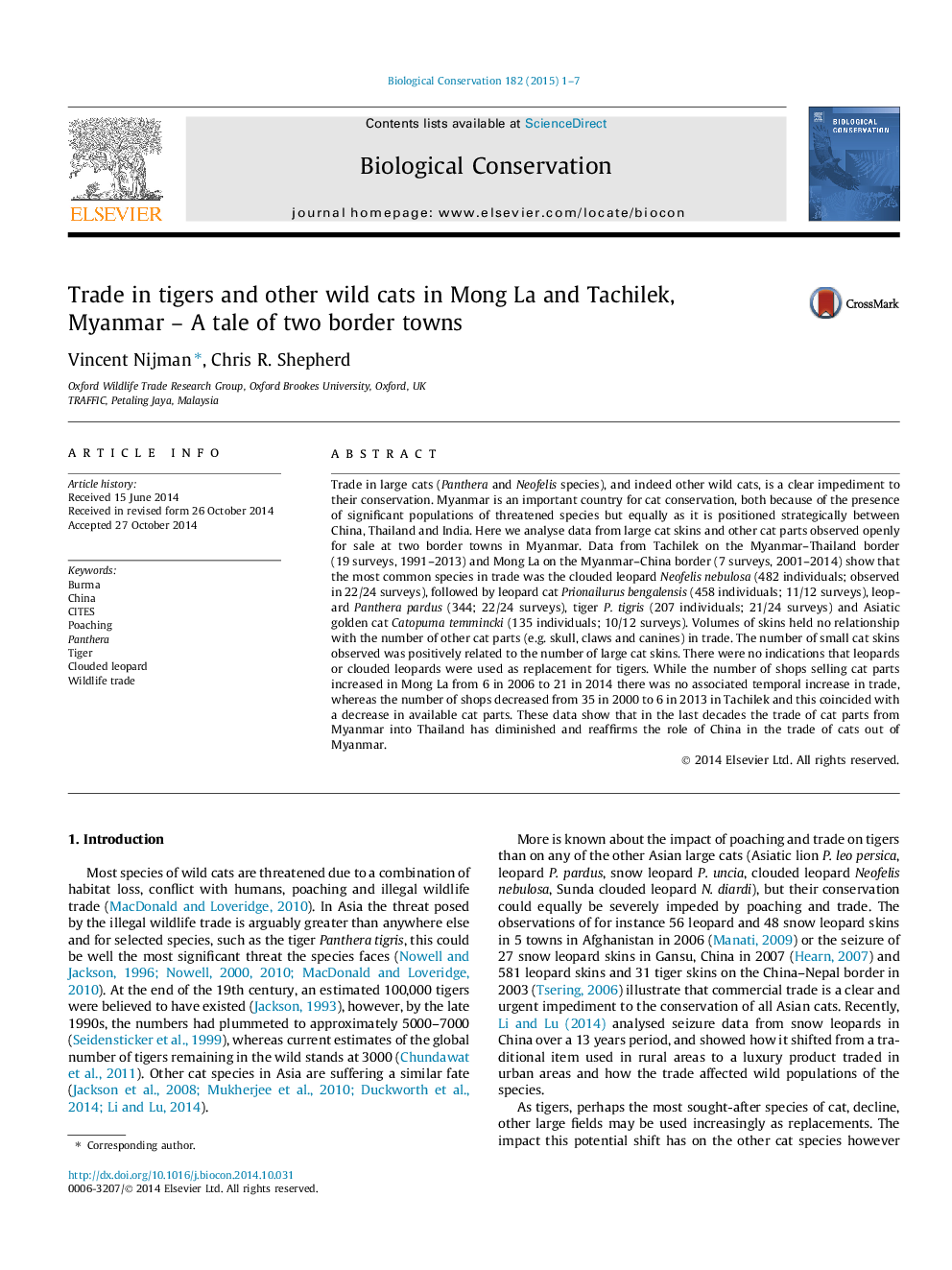| Article ID | Journal | Published Year | Pages | File Type |
|---|---|---|---|---|
| 6299285 | Biological Conservation | 2015 | 7 Pages |
Abstract
Trade in large cats (Panthera and Neofelis species), and indeed other wild cats, is a clear impediment to their conservation. Myanmar is an important country for cat conservation, both because of the presence of significant populations of threatened species but equally as it is positioned strategically between China, Thailand and India. Here we analyse data from large cat skins and other cat parts observed openly for sale at two border towns in Myanmar. Data from Tachilek on the Myanmar-Thailand border (19 surveys, 1991-2013) and Mong La on the Myanmar-China border (7 surveys, 2001-2014) show that the most common species in trade was the clouded leopard Neofelis nebulosa (482 individuals; observed in 22/24 surveys), followed by leopard cat Prionailurus bengalensis (458 individuals; 11/12 surveys), leopard Panthera pardus (344; 22/24 surveys), tiger P. tigris (207 individuals; 21/24 surveys) and Asiatic golden cat Catopuma temmincki (135 individuals; 10/12 surveys). Volumes of skins held no relationship with the number of other cat parts (e.g. skull, claws and canines) in trade. The number of small cat skins observed was positively related to the number of large cat skins. There were no indications that leopards or clouded leopards were used as replacement for tigers. While the number of shops selling cat parts increased in Mong La from 6 in 2006 to 21 in 2014 there was no associated temporal increase in trade, whereas the number of shops decreased from 35 in 2000 to 6 in 2013 in Tachilek and this coincided with a decrease in available cat parts. These data show that in the last decades the trade of cat parts from Myanmar into Thailand has diminished and reaffirms the role of China in the trade of cats out of Myanmar.
Related Topics
Life Sciences
Agricultural and Biological Sciences
Ecology, Evolution, Behavior and Systematics
Authors
Vincent Nijman, Chris R. Shepherd,
